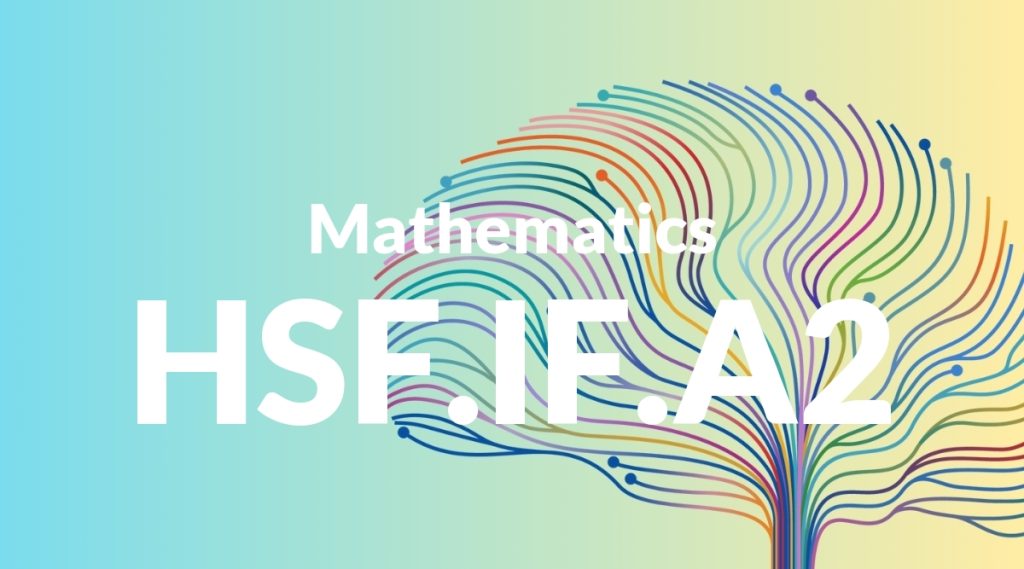Standard: HSF.IF.A2 – Use function notation, evaluate functions for inputs in their domains, and interpret statements that use function notation in terms of a context.
Grade level: High School: Functions
Subject: Mathematics
Domain: Interpreting Functions
Teacher Overview
This standard focuses on using function notation to evaluate functions and interpret their meanings in various contexts. Mastery of this standard is crucial as it forms the foundation for understanding more complex functions and their applications in real-world scenarios. Students should have a solid grasp of basic algebra, including variables, expressions, and equations. They should also understand the concept of a function as a relationship between inputs and outputs.
After mastering this standard, students will be prepared to tackle more complex functions and apply their knowledge to solve real-world problems in fields like science, engineering, and economics.
Common Misconception 1
A common misconception is that students might interpret function notation f(x) as multiplication. This misunderstanding can lead to errors in evaluating and interpreting functions.
Intervention 1
To address this, emphasize that f(x) represents the value of the function at x. Use clear examples and practice problems to reinforce this concept.
Common Misconception 2
Another misconception is that students may think all functions are linear, limiting their understanding of function diversity.
Intervention 2
Introduce various types of functions (e.g., quadratic, exponential) and use graphing tools to illustrate their differences. Provide real-world examples to show their unique applications.
Prerequisite Knowledge
Students should understand basic algebraic concepts, including variables, expressions, and equations. They should also be familiar with the concept of a function as a relationship between inputs and outputs.
Subsequent Knowledge
Students will develop the ability to analyze more complex functions, including exponential, logarithmic, and trigonometric functions. They will also learn to apply functions to solve real-world problems in various fields like science, engineering, and economics.
Instructional Activities
- Graphing different types of functions to observe their characteristics
- Solving real-world problems using function notation
- Group activities where students create their own functions and interpret them
- Interactive online simulations to visualize function behavior
- Using graphing calculators to evaluate functions for various inputs




